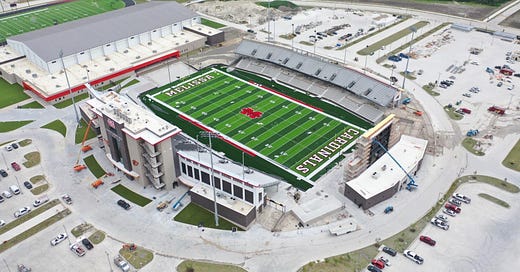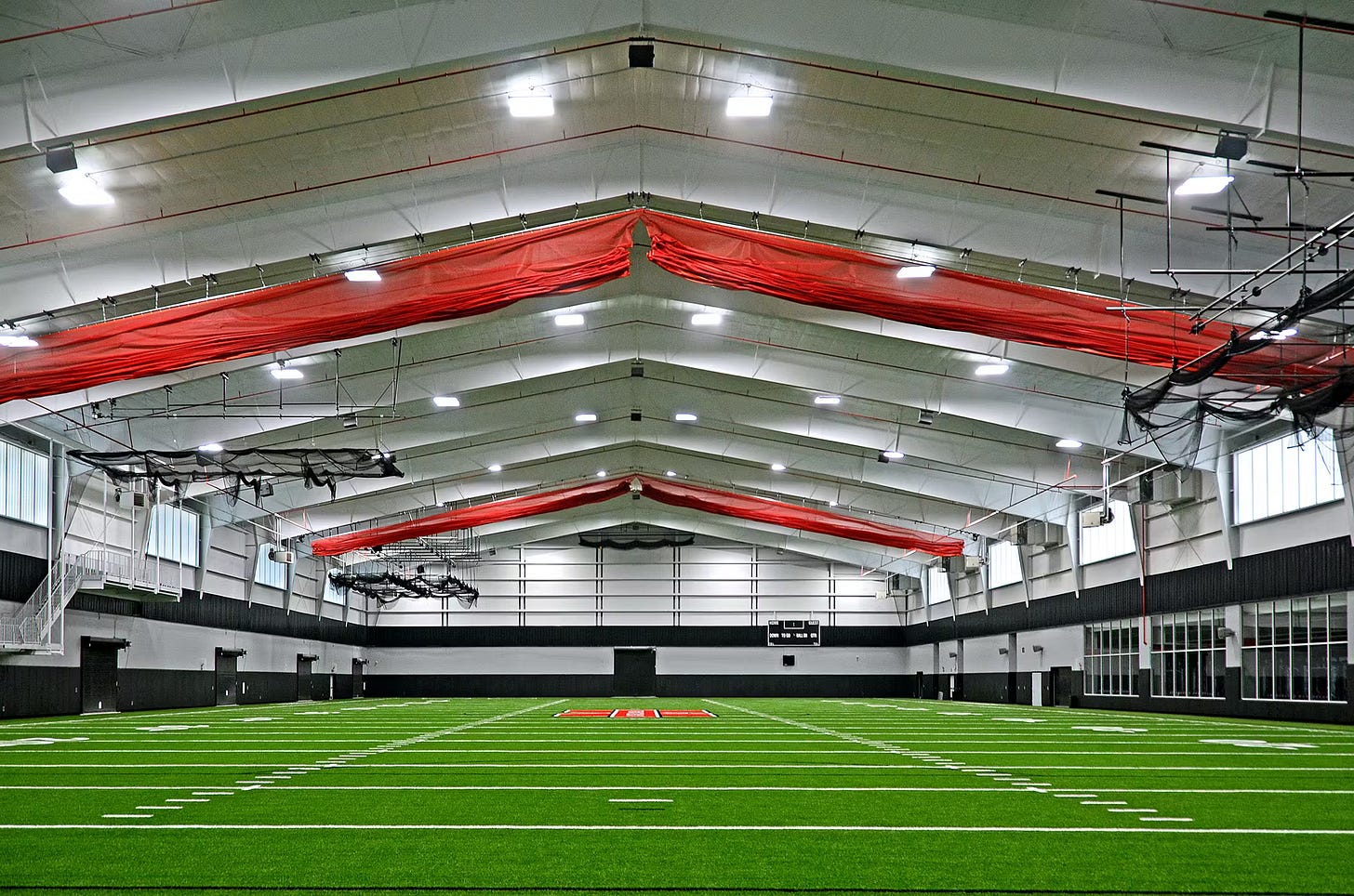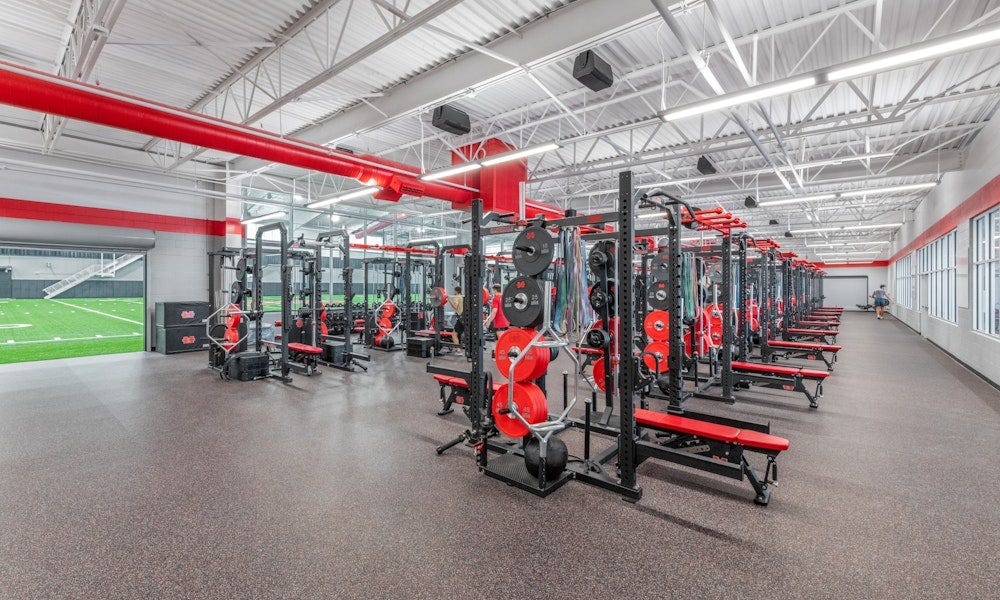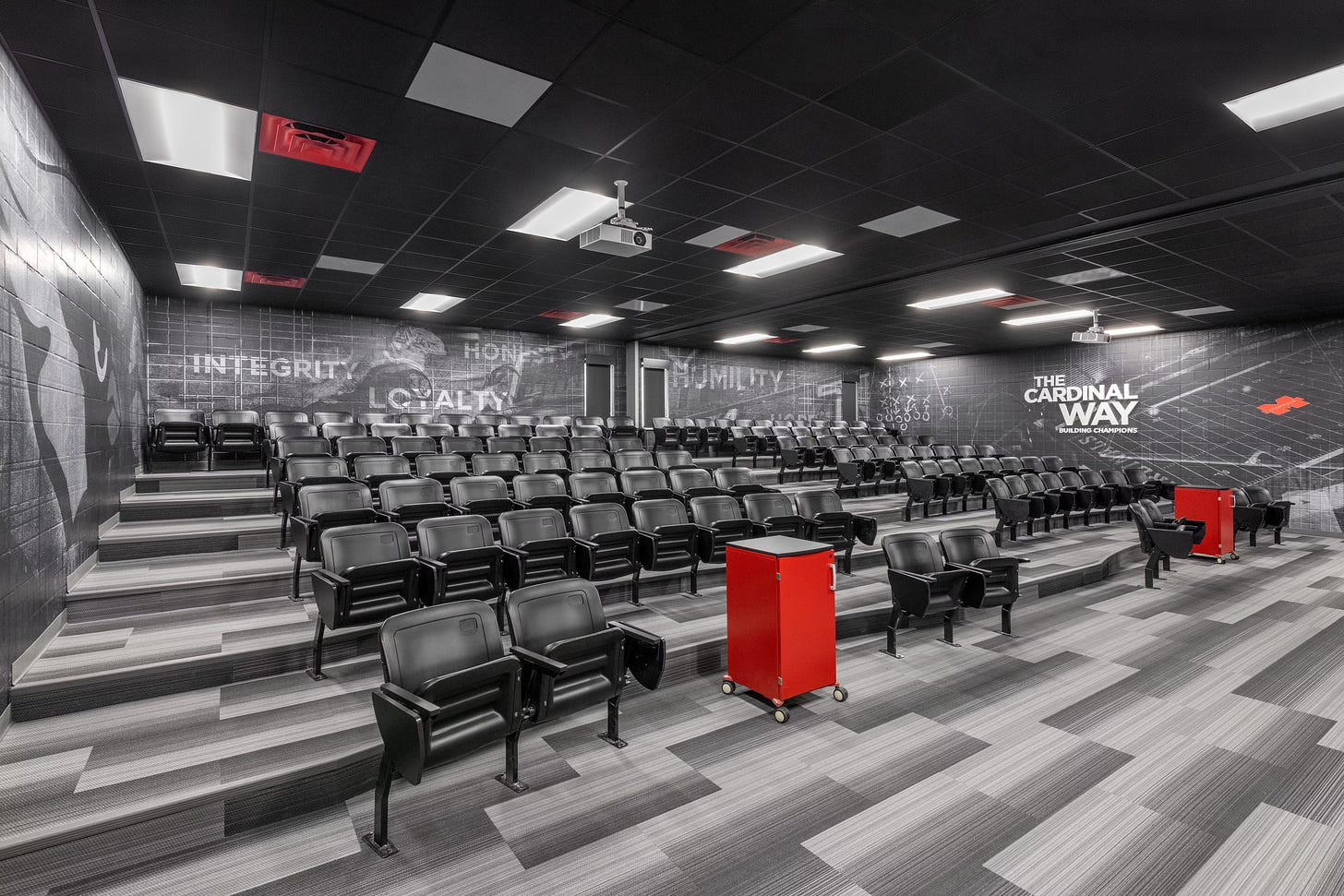Huddle Up is a 3x weekly newsletter that breaks down the business and money behind sports. If you are not already a subscriber, sign up and join 100,000+ others who receive it directly in their inbox each week.
Today At A Glance:
High school football in Texas has taken on a world of its own. We’re seeing $50 million-plus stadiums built, restaurants experiencing an economic boom in the Fall, and thousands of people attending games every Friday night. So today’s newsletter examines how Texas became the country’s biggest football hotbed and how the economics of the sport incentivize the construction of multi-million-dollar stadiums.
This newsletter is also available via podcast on Apple or Spotify. Enjoy!
This Newsletter is Sponsored By ButcherBox!
I’ve been ordering from ButcherBox for a few years now, and it’s the single best solution I’ve found to save time while guaranteeing the quality of your food.
ButcherBox delivers 100% grass-fed grass-finished beef, free-range, organic chicken, humanely raised pork, and wild-caught seafood directly to your doorstep. Yes, it’s literally that easy — and it tastes incredible!
So ditch the butcher lines today and guarantee the freshness of your meat with ButcherBox.
And here’s the best part: If you sign up today, ButcherBox is offering all Huddle Up readers 2 lbs of ground beef for FREE every time they order over the next year. So sign up using the link below, and everyone in your household will thank you later.
Friends,
Melissa High School, outside Dallas, Texas, recently opened its new football facility.
The facility includes a 100-yard indoor football field with a state-of-the-art weight room, meeting rooms, and locker room. The stadium has 10,000 seats, several luxury boxes, and a scoreboard that would make many Division I schools jealous.
The project cost $35 million, and it caught the attention of millions on Twitter.
But the craziest part is that Melissa High School only has 1,500 students, and this $35 million stadium isn’t even one of Texas's Top 10 most expensive high school facilities.
That’s because Texas places a premium on high school. Friday night games bring communities together — and, in turn, have turned the sport into a huge business.
Many of you have probably read the book (or seen the movie) Friday Night Lights.
It’s the story of the economically depressed town of Odessa, Texas, and its heroic high school football team, The Permian High Panthers. The basic premise is that football is life — the students, parents, and community live for Friday nights.
The book was written by Pulitzer Prize-winning journalist Buzz Bissinger, selling over two million copies and inspiring a film and TV franchise that made nine figures.
The Friday Night Lights franchise has been so successful, in my opinion, because the storyline is accurate. Not in the literal sense — Hollywood shifted around some of the details to make it more dramatic. But the Friday Night Lights storyline is true because Texas really does care that much about high school football.
For example, Texas has more high school football players (169,132) than the two other high school football hotbeds in California (84,626) and Florida (37,898) combined.
The sport became so popular because it has historically been the primary source of entertainment in Texas communities, especially during times of war in the United States.
And that high level of interest eventually enabled economic incentives to take over.
Texas high school football fans spend an estimated $443 million on tickets each season. Individual teams can earn upwards of $50,000 per season from corporate advertisements in their gameday programs. And Dairy Queen restaurants in Texas say they typically see a 30% to 70% spike in sales on Friday nights during football season.
But that only scratches the surface, as Texas high school football is its own economy.
Take the stadiums, for instance. Texas has 1,267 high school football stadiums that collectively seat 4.4 million people. There are 75 stadiums that seat 10,000 to 16,000, and 8 stadiums that seat over 16,500 — not including the 20,500-seat Toyota Stadium, which Frisco high schools share with FC Dallas of Major League Soccer.
Texas High School Football Stadiums By The Numbers
Total number of stadiums: 1,267
Total statewide capacity: 4,434,943
Average seating capacity: 3,500
Total number of stadiums with 16,500 seats or more: 8
Total number of stadiums with 10,001 to 16,000: 75
This infatuation with large stadiums started with Permian High School, who spent $5.6 million, or $16.8 million inflation-adjusted, on a brand-new stadium in 1982.
The trend then continued with Southlake, a Dallas-Fort Worth suburb, spending $15.3 million on the then-new Dragon Stadium in 2001. That stadium has 11,000 seats, and the construction cost comes out to $25 million once adjusting for inflation today.
And the ten most expensive high school football stadiums in Texas today cost between $39 million and $80 million to build.
Most Expensive High School Football Stadiums In Texas
Cy-Fair FCU Stadium at Berry Center (Cy-Fair ISD)
Cost: $80 million
Seats: 11,000
Legacy Stadium (Katy ISD)
Cost: $70.3 million
Seats: 12,000
McKinney Stadium (McKinney ISD)
Cost: $70 million
Seats: 12,000
Eagle Stadium (Allen ISD)
Cost: $60 million
Seats: 18,000
Woodforest Bank Stadium (Conroe ISD)
Cost: $49 million
Seats: 10,000
Children’s Health Stadium (Prosper ISD)
Cost: $48 million
Seats: 12,000
Memorial Stadium (Beaumont ISD)
Cost: $47.3 million
Seats: 10,600
District Stadium (Tomball ISD)
Cost: $42.6 million
Seats: 10,000
Freedom Field (Alvin ISD)
Cost: $41.4 million
Seats: 10,280
Challenger-Columbia Stadium (Clear Creek ISD)
Cost: $39 million
Seats: 10,000
It’s not like these huge stadiums are unnecessary, either. Eagle Stadium in Allen, Texas, is one of the largest high school stadiums in the country at 18,000 seats. But they have 10,000 season ticket holders alone and drew 22,000 total people (18,000 stadium seats and the rest standing room only) for the stadium’s opening game in 2012.
And similar to high-level college or NFL teams, these crowds allow Texas high school football programs to sign stadium naming rights deals that can reach $300,000 yearly.
Texas High School Stadium Naming Rights Deals
Prosper ISD: 10 years, $2.5 million ($250,000 per year) with Children’s Health
Lubbock ISD: 10 years, $3 million ($300,000 per year) with PlainsCapital Bank
Katy ISD: 10 years, $2.5 million ($250,000 per year) with Academy Sports + Outdoors
Conroe ISD: 10 years, $1 million ($100,000 per year) with Woodforest National Bank
Remember, many Power 5 college football programs don’t even have stadium naming rights deals.
Many people hear this and instinctively ask about education or teacher salaries.
And that’s a fair point, as the best high school football coaches in Texas historically have earned 2-3x more in salary — $150,000 for coaches vs. $60,000 for teachers —and the math says kids have less than a 0.1% chance of making it to the NFL.
States With The Most NFL Players (2022)
Texas: 199
Florida: 185
California: 166
Georgia: 151
Ohio: 74
However, academics play a unique role in getting these stadium deals approved.
That’s because Texas high school football stadium projects are voted on through a referendum. Or, in simple terms, local communities vote yes on referendums for stadiums to get built, and then the bond packages are later repaid by their tax money.
But the catch is that these referendums are typically all-or-nothing deals. So if a parent wants to improve the school’s classrooms, bus system, or anything else, they also have to agree (in most cases) to fund the construction of a new football stadium.
Many of these stadiums are used for other sports and hold spectator events. And more importantly, many stadiums also serve multiple schools, like Legacy Stadium in Katy, Texas, which cost $70 million but gets used by eight different schools.
Still, more than 60 bonds have been issued by Texas school districts over the last two decades to partially build a new football stadium or renovate existing athletic facilities.
And even though the economic impact of high school, college, and NFL stadiums has traditionally been questionable at best, the popularity of high school football in Texas enables these deals to continue getting done.
If you enjoyed this breakdown, please consider sharing it with your friends.
I hope everyone has a great day. We’ll talk on Wednesday.
Listen to the Joe Pomp Show on Apple or Spotify.
Interested in advertising with Huddle Up? Email me.
Your feedback helps me improve Huddle Up. How did you like today’s post?
Loved | Great | Good | Meh | Bad
Extra Credit: Sign Up For Kenny Beecham’s Enjoy Basketball Newsletter!
Co-founded by Kenny Beecham, Enjoy Basketball is a positive-first media brand that gives NBA fans the news they need to know, without the Skip Bayless-style hot takes.
Whether it’s the FIBA World Cup or 2023-24 season predictions, stay up to date with their coverage on all things hoops this offseason. They’ve got you covered on all the moves and happenings around the league!
Start your day with game recaps, league news, NBA player interviews, trivia, memes, and more.
Join the FREE 3x weekly newsletter HERE and keep up with the game alongside 50,000+ Enjoyers of basketball.
Huddle Up is a 3x weekly newsletter that breaks down the business and money behind sports. If you are not already a subscriber, sign up and join 100,000+ others who receive it directly in their inbox each week.










You left out Grande Communications Stadium (now Astound Broadband Stadium) in Midland, TX. Got a 25 year $1.2mm naming rights deal in 2002 which was biggest of its kind at the time. It was completed in 2002, seats 15k with 18k capacity and I believe cost $25mm at the time. It was candidly the first of the new mega expensive stadiums.
Considering florida only has ~1/5 the amount of high school football players Texas does, their success of sending folks to the NFL is impressive.